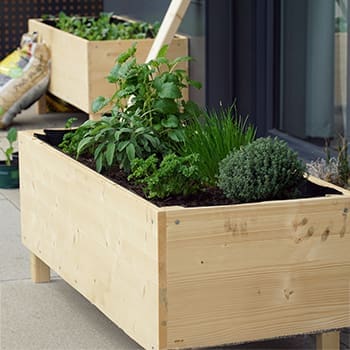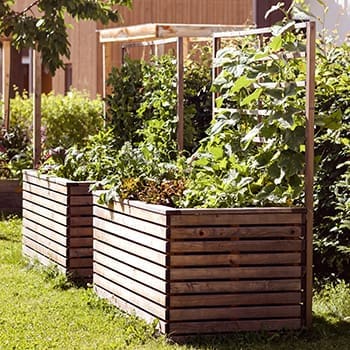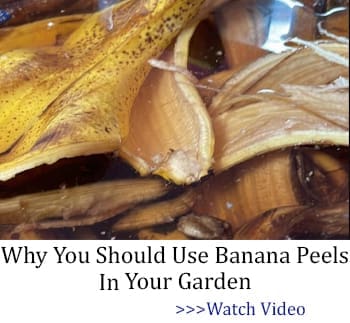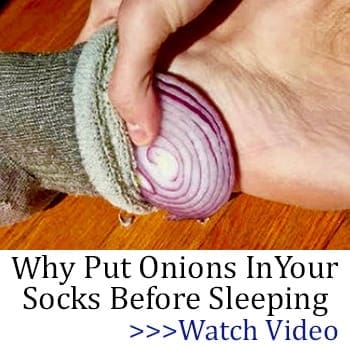That’s right, you read the title correctly. This article is about stepping away from raised beds, raised bed culture, and canceling raised beds.
Not what you’re expecting to see here, is it? While I love the idea of raised bed gardens and think they’re a great option for a lot of gardens and gardeners, they aren’t always going to be the best idea. And, in many cases throughout my gardening career, I’ve stopped using them for long periods of time. Why? Let’s take a look.
Renting
This is probably the biggest reason you’ll see pushback against raised beds. Everyone wants their deposit back and it can be difficult to do that when you’ve, um, remodeled the yard.
That’s the polite way to say it, right? Right.
The worst part of this is that even though you’re often making improvements, many people don’t appreciate them. I’ve been stuck renting a few times, been told it was fine to put in a raised bed, and then have its removal deducted from my deposit.
And we even had it in writing. Didn’t matter. The courts wouldn’t back us and we lost out on hundreds of dollars. So reason one why I stop using raised gardening beds? Renting.
It’s a real pain.
Container Supremacy
I love container gardening. For the purposes of this article, my “use a giant tupperware tub!” sometimes substitutions for typical raised beds are counting as container gardening, not raised beds.
The simple fact here is that it’s easier to move your plants out of a harmful area or harmful weather. Plant getting too much sun because a neighbor took down a tree that was once sheltering your raised bed? Well, you’re in trouble. If you have that same plant in a container, you can just move it to one side or the other. Boom. Problem solved.
Even better, you’re less likely to lose plants to detrimental weather (such as hail) if you can bring them inside or under an awning very quickly. Though the argument can be made that you can toss a tarp up over small raised beds, this won’t work for large ones. Your container garden can always come in to hide inside your garage or shed. Your raised bed? Not so much.
There is also the enormous benefit of not having your plants swarm other plants in a raised bed if they tend to be invasive. I say this, without a trace of irony, as someone who has several different types of mint; and many are planted in-ground.
No, I don’t know what I was thinking, either.
Wood Rot
This is a big deal and a big problem with many raised beds. People will put down the wrong sort of wood to retain the “wall” area of their raised beds and it not only draws insects to eat that rotting wood, but the predators who eat those insects.
Who are those predators? Say it with me, class.
Birds.
The worst thing I’ve seen happen was someone who used simple, untreated 2 x 4s to make a raised bed. It was gorgeous the first year and started to get strange little pockmarks in it the second. By the third year, it was completely rotten and falling apart. It had strawberry plants in it. The first two years, beautiful and bountiful crops. The third? The birds came for the bugs and realized that dessert was right in front of them, too. The gardeners managed to save all of a handful of strawberries when in years prior, they’d had so many they’d been giving away pounds of them.
It’s always heartbreaking to see the damage that birds can do to a garden, for all we as gardeners do love them. Using the wrong wood on your raised bed will invite them as much as if you posted a sign doing so; probably more so since birds can’t read!
So what wood should you use to build a raised bed? That depends on your area and what’s available. I strongly recommend talking to your local gardening club or a nursery in the area, since many of them have a mix of container gardens, in-soil plants, and a number of raised beds. They will likely be able to steer you in the right direction for your specific pest load and your typical local weather.
That said, we do something very unpopular with more modern gardeners. I used railroad ties. There is still a risk of pests and birds, but a little less so. The bigger problem is potentially copper and other substances leeching into the soil from whatever the wood was exposed to in its usage days. Therefore, when we do have raised beds like this, we use them only for non-edibles.
However
If you own your own home and you know that a raised bed is for you, I’m not going to stop you. I’m also not here to change your mind so much as to point out that even with the best care and management, there can be issues with raised beds. They aren’t a fix-all like many current popular gardeners like to pretend they are.
They might lower your pest load, but they might not. Also, they may even add to it if the wood brings in something, such as termites, that weren’t on your property before. Then you may be looking at some serious bills if these pests tear up your garden or if they come after you in your home.
Like any other form of gardening, raised beds have their pros and cons. Personally, I’m not the biggest fan of them at the moment and won’t be building more right this second.
How about you? What’s your experience with raised beds and their alternatives? Do you have a favorite (or a least favorite) way to make them work or did you step out of them altogether like I have? Talk to us in the comments down below; we’d love to hear from you. And remember, Happy Gardening!
You may also like:
An Insanely Effective Way to Build a 5 Year Food Stockpile (Video)












Hi Elizabeth,
Good article & you made me laugh at, “What was I thinking!” Who hasn’t said that? LOL. Live & Learn.
The only reason raised beds appeal to me is because I am older and bending a lot is not as easy as in younger days. I aways planned on using them but have ended up using 5 gal buckets for most of my growing & have extended the growing season by brining them in when temps take a deep dive here in the North East.
One thing you can add that I only learned this year & why I’ve totally scratched the raised bed option for myself is issues with septic systems. If you have one I’m sure most would want to use raised beds to avoid planting in ground near them. Well, I learned the weight of raised beds if placed in areas where the leech field is can cause damage to your system. Those pipes for the leech fields are not buried very deep at all and you don’t want anything heavy on them. Do your own research & you will see.
God Bless,
Phyllis
I’m fairly new to gardening and just moved to FL. My soil is mostly sand and rock. I was going to do raised beds just because I don’t know that much will grow (other than weeds) in my back yard. It’s windy often here, so if I did buckets or tubs, I think I’d still need to make something to help block some of the wind, and I think that would make them more permanent anyway? I was also going to order the metal raised beds. I bought some of your books to help learn to grow food… We’re trying to start composting and getting soil for the beds for next year…